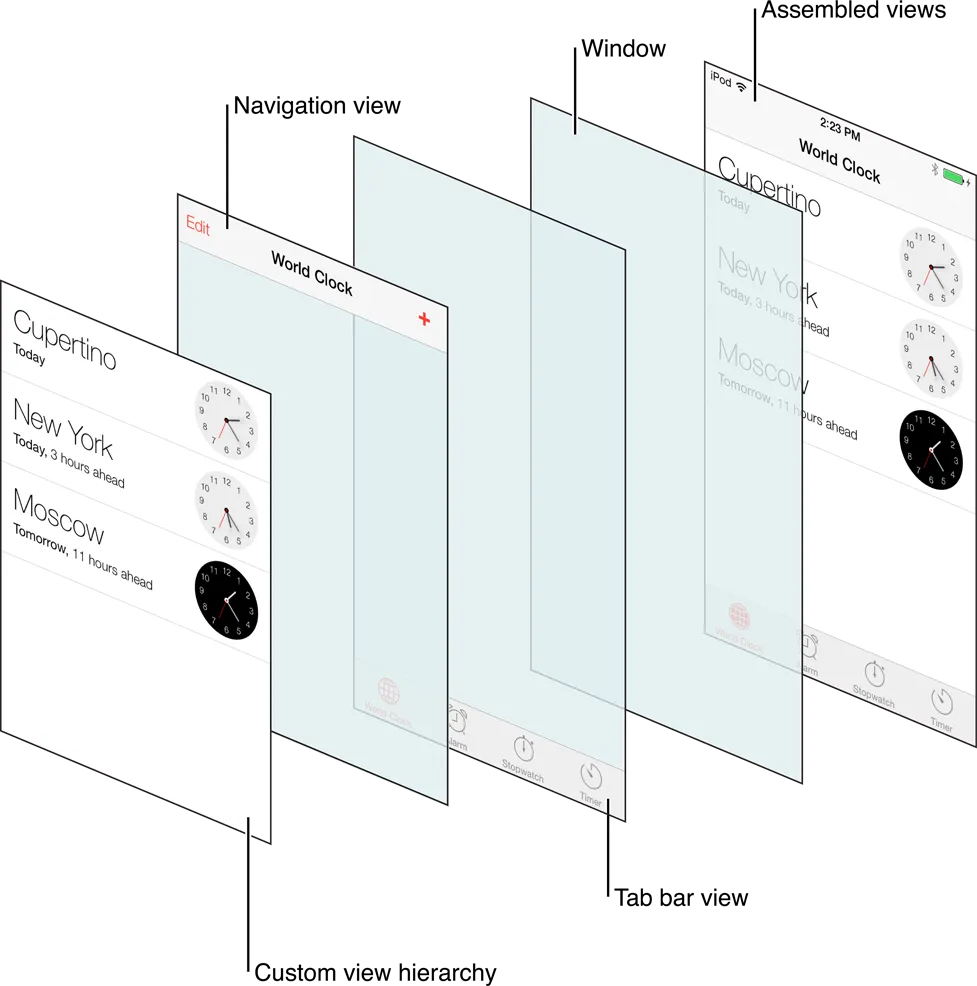In the world of iOS app development, creating an effective and intuitive navigation system is paramount. It’s the cornerstone of an app’s user experience, ensuring that users can seamlessly traverse through the various screens and features.
The Navigation Stack: A Hierarchical Approach

At the core of iOS navigation lies the navigation stack, functioning on a last-in, first-out (LIFO) principle. It mimics the behavior of a stack data structure, where new view controllers are pushed onto the stack when users traverse to new screens. When they backtrack, these controllers are systematically popped off. Effective management of the navigation stack is critical for sustaining a coherent app flow.
For example, consider an e-commerce app. When a user proceeds from the product catalog to an item’s details, the item details screen is pushed onto the stack. If they decide to view another item’s details, the navigation stack accommodates this seamlessly, preserving the app’s logical flow.
Deep Linking: Precision Navigation
Deep linking is a sophisticated technique enabling users to land directly on a specific page or content within an app. This functionality supersedes the traditional practice of opening an app’s default screen. The result? Enhanced user engagement and retention, as users are guided directly to their desired content.
To implement deep linking, iOS developers set up URL schemes or Universal Links. These configurations empower apps to respond to external requests and launch with context, ensuring that the app opens precisely where the user expects.
Consider a news app utilizing deep linking. When users click a news article link, they’re taken directly to that specific article’s page, rather than the app’s home screen. This level of precision enhances the user experience.
Handling Open URLs: Bridging The App Ecosystem
To truly elevate your app’s accessibility and interconnectedness, it’s imperative to handle open URLs. This capability enables your app to respond to URLs originating from other apps or services. Let’s say your app is event-focused; when a user clicks on an event link in an email or a website, your app should open and display the corresponding event details.
Perfectly executed open URL handling doesn’t just make your app more versatile but also significantly improves the overall user experience. Users can smoothly transition from other apps or web content directly into yours.
Pragmatic Navigation Design: User-Centric Approach
Pragmatic navigation design is not just about aesthetics; it’s a user-centric approach that enhances the overall user experience. It incorporates aspects like information architecture, visual design, and interaction design, all aimed at ensuring that users can seamlessly navigate your app, locate content effortlessly, and switch between screens without any friction.
The InRhythm Propel Summit: A Platform For Learning And Innovation
The InRhythm Propel Summit is an embodiment of our commitment to continuous learning and growth in the tech industry. It’s a platform where experts and enthusiasts come together to share their knowledge, insights, and experiences. The iOS workshop at this summer’s Summit delved into the intricacies of iOS navigation, among other topics. It’s a part of our mission to equip developers with the tools and knowledge they need to build applications that are not just functional but provide exceptional user experiences.
By fostering a community of learners and innovators, we align with the core values of the InRhythm Propel Summit and contribute to the advancement of the tech industry. The iOS workshop, like the entire summit, serves as a catalyst for propelling our industry forward. It’s a place where we not only grow individually but also collectively, making strides towards innovation and excellence.
Closing Thoughts
In the dynamic realm of iOS app development, navigation isn’t just about moving from one screen to another; it’s about guiding users on a journey. An intuitive, efficient, and engaging navigation system can be the difference between an app’s success and obscurity. Mastering the navigation stack, leveraging deep linking, and seamlessly handling open URLs are skills that every iOS developer should acquire. Moreover, adopting a pragmatic navigation design approach, centered around the user’s needs and expectations, is what separates good apps from great ones.
As we reflect on the multifaceted world of iOS navigation, we’re reminded of the InRhythm Propel Summit’s overarching mission: to foster learning, innovation, and excellence in the tech industry. The iOS workshop, along with other insightful sessions, not only equips us with practical knowledge but also nurtures the spirit of continuous growth and collective advancement. It’s a testament to our commitment to building a future where technology isn’t just functional; it’s an integral part of enhancing people’s lives.
As you navigate your own iOS development journey, always keep in mind the principles of effective navigation: logical structure, user-focused design, and a commitment to constant improvement. With these tools, you’re poised to make a real impact on the world of app development and the experiences of countless users.